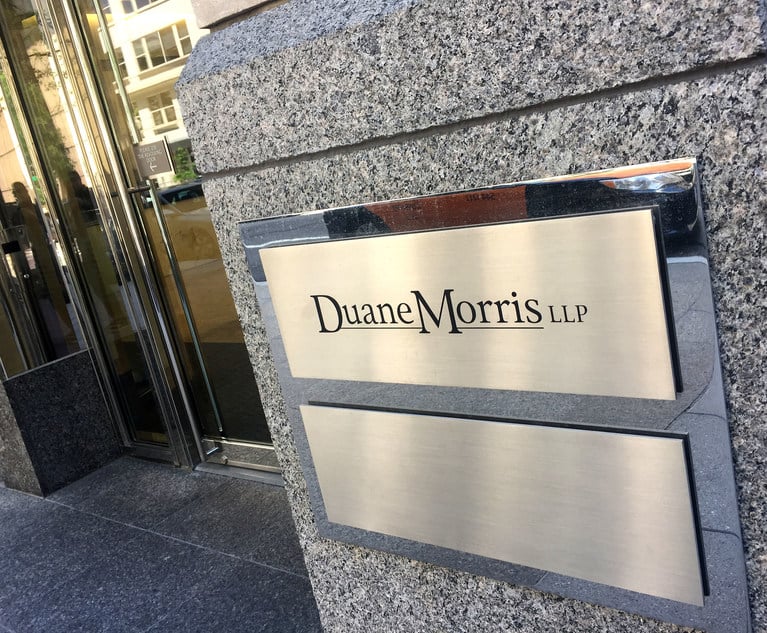Gone are the days when partners take clients out to lunch and give the news that their billing rates are going up, even more so than before. Now, it’s increasingly common that lawyers rely on firmwide engagement letters or online e-billing platforms to alert clients of rate increases, even though less personalized communication can frustrate clients, say pricing experts and corporate counsel consultants.
One firm chair said he estimates that more than 50% of their firm’s partners don’t notify their clients now of rate increases, and instead rely on renewing engagement letters to do so. He noted that firms started alerting clients of regular, more automatic, across-the-board rate increases in their engagement letters about 10 years ago, causing many partners to move away from the awkward client conversations.
“The days of the notification by lunch over a martini are a cherished memory. Phone calls are no longer even the preferred method,” said Jason Winmill, a corporate counsel consultant and managing partner at Argopoint. “Notifications often come in through letters that dictate how firms plan on changing the contractual representational relationship.”
These letters contain language such as “we have appreciated the trust you have placed in us,” and “we look forward to continuing to represent your interests,” Winmill noted.
For many partners, this letter can be a headache. “Rate increase notifications are the worst thing for clients and partners. Partners often absolutely hate sending out those letters of rate increases,” said Kevin Broyles, the managing partner of Atlanta-based Am Law 200 firm FisherBroyles.
At other firms, notifications may also be given to clients through e-billing software. For instance, Alan Zoccolillo, partner and chair of the North American transactional practices at Baker & McKenzie, said that his firm uses e-billing technology, where lawyers plug in new rates and then they are subsequently approved by clients. Despite the technological change, however, he said he tends to pick up the phone and call clients about rate increases.
Broyles also said, when he does increase his rates, he sends a personal email to his clients informing them.
Several industry observers said that that kind of personal client communication is still important.
According to Law.com reporting this year, general counsel say that even as rate increases accelerate, law firms are getting worse at communicating the changes to clients, in part because the widespread adoption of e-billing has reduced human-to-human contact between law firms and clients.
“I’ve talked to peer general counsel, and they have the same reaction: It’s not a negotiation anymore, or a back-and-forth,” said Richard Parr, general counsel of AEG Vision, which provides operational support to optometry practices, told Law.com this year. “Even if they don’t have a conversation that would accommodate negotiation, they don’t give some form of communication prior to sending a bill. You just always see it on the bill.”
Still, industry experts and observers say clients should rarely find out about rate increases solely through legal fee bills.
“It may feel like clients are only getting notified of their increases in their bills more because the rate changes have been more aggressive in the last five years,” said Mark Medice, a principal at LawVision and law firm consultant.
Wells Fargo’s Legal Specialty Group reported average standard billing rates rose 9.0% in the first quarter of 2024, year-over-year, and they were up from the 8.3% increase experienced for all of 2023. Standard rate growth was considerably higher for the Am Law 50 (up 9.8%) than for the other tiers (up 7.4% for the second 50 and 6.9% for the second hundred), Wells Fargo said.
Clients ‘Leveling Up’
As billing rates have soared, clients have added personnel and resources ready to meet those demands.
“It’s much more of a brace-for-impact attitude by clients nowadays,” said Winmill. “Clients increasingly have roles and responsibilities and more formal practices to respond to these billing notifications and requests.”
Corporate clients at large companies increasingly hire and utilize pricing directors and legal operations teams, noted Jennifer McIver, director of legal operations and industry insights at Wolters Kluwer ELM Solutions. “A lot of corporate legal departments provide parameters on those rate increases and how they want to increase them,” McIver said.
McIver noted that conversations between in-house attorneys and firm attorneys tend to be more “old school,” where they may chat about rates over lunch or drinks. But when legal ops teams and the pricing directors are involved in rate increase conversations, the process is more mechanic, as “pricing data is at the forefront of their conversations with firms.”
Best Practices
Part of the reason that clients may feel blindsided by bills is because many partners are still uncertain about how to talk to clients about the increases. “I’ve been with partners on multiple occasions who say that they are deeply uncomfortable talking about pricing issues with their clients,” said Medice.
But McIver said having “meetings and more communication—not just tossing an email out there—is what corporate departments are looking for.”
Some midsize firm leaders say the billing rate process is still done over the phone or over lunch at their firms. “We are not always dealing with general counsel but dealing instead with clients and principals on matters such as rates and billing, so that it is a much more individualistic process based on the nature of the relationship between the originating or the responsible attorney,” said Ronald Shechtman, the managing partner at Pryor Cashman.
Shechtman said that billing rate notification practices differ from partner to partner at Pryor Cashman, but in his own case, he “usually reviews billing annually … directly with clients in a conversation about the basis of any adjustment.”
Broyles said it’s important to his firm that their partners choose their rate increases, and communicate independently to their clients about those changes. “The larger a firm gets, the less connection they have to the client and the less information they have about the client. It always makes sense to give that authority to the partners, as they’re best able to understand their clients and give them what they need,” he said.
Medice advises the firms he works with to create quarterly notifications to clients that explain and lay out rate increases. “While the market for pricing has gotten substantially better and more transparent, we’ve still got some ways to go to really increase the transparency and efficiency of the market and the marketplace,” he said.
NOT FOR REPRINT
© 2024 ALM Global, LLC, All Rights Reserved. Request academic re-use from www.copyright.com. All other uses, submit a request to [email protected]. For more information visit Asset & Logo Licensing.


 (Credit: only_kim/Adobe Stock)
(Credit: only_kim/Adobe Stock)





